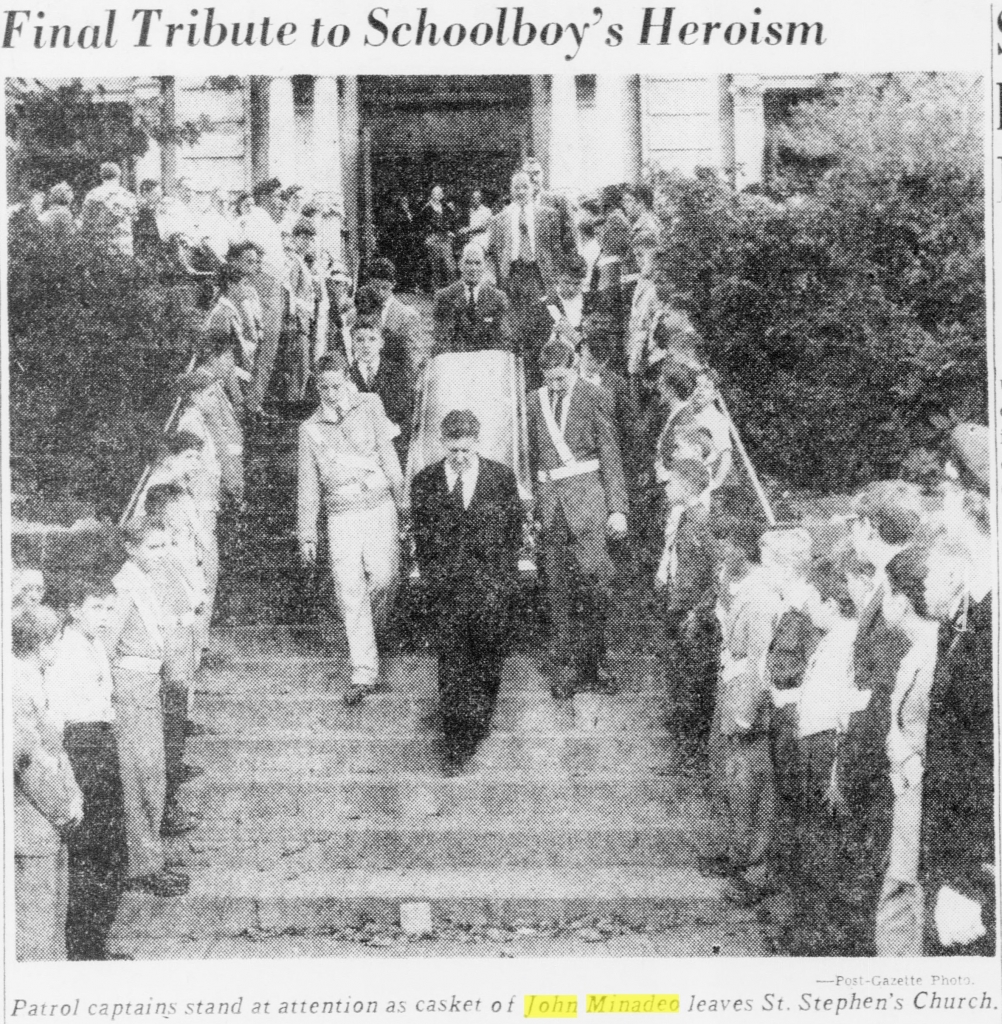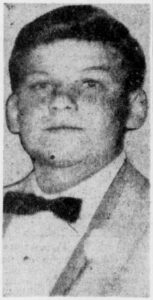

While the Hero Fund saw to it that John Minadeo be recognized for his courage, Pittsburgh school leaders ensured he would be remembered by his community.
John became a hero at age 15, when the newly named captain of his school safety patrol died attempting to shield classmates from an out-of-control county government car that rushed down a steep hill near their school after dismissal on Oct. 7, 1954. John had been a member of the safety patrol for about three years.
At his station on a curb at an intersection, John extended his arms horizontally to guard the children behind him as the car’s right wheels mounted the curb. The car struck John and two girls, carrying them across the intersection before they fell to the ground; the car crashed into a pole. John and one of the girls died almost instantly; the other girl, who suffered extensive brain trauma, was hospitalized for 10 months.
Within weeks of the horrific accident, then Pittsburgh Public Schools Superintendent Earl A. Dimmick wrote to the Hero Fund to nominate John for the Carnegie Medal. In a petition that included several newspaper clippings chronicling the crash and the aftermath, he wrote that John “gave his life in a valiant effort” to save the lives of his schoolmates from “the careening machine.”
“As it plunged toward the intersection, John attempted to herd the students back on to the sidewalk,” Dimmick wrote. “At the risk of his life, he ignored the on-rushing car.” The following January, the Hero Fund awarded John posthumously.
The community mourned with the Minadeo family, which had moved from Italy a few years earlier. A funeral director estimated that 7,000 people came to view John’s body, while roughly 1,000 attended the funeral at a church. About 20 of his fellow safety patrol members were pallbearers as he was buried in the cemetery where his father, Antonio, was employed as a laborer.
With the aid of relatives, John’s parents wrote a note to The Pittsburgh Press, thanking the paper and community members for honoring him.
“We shall never forget this kindness, as it makes us feel that we have made the right move in coming to this country, for only in America would the newspapers pay such tribute to our beloved son,” they wrote.
By Thanksgiving, school officials already resolved to name a new building for John. That school, which opened in February 1957, remains in use today. A year later, on what would have been his 19th birthday, community members dedicated a plaque at the scene depicting his actions.
In 1978, author L.B. Taylor, Jr., included John’s story in a book, “Rescue! True Stories of Heroism,” which focused on the deeds of many of the youngest Carnegie Medal awardees.
–Chris Foreman, Case Investigator

